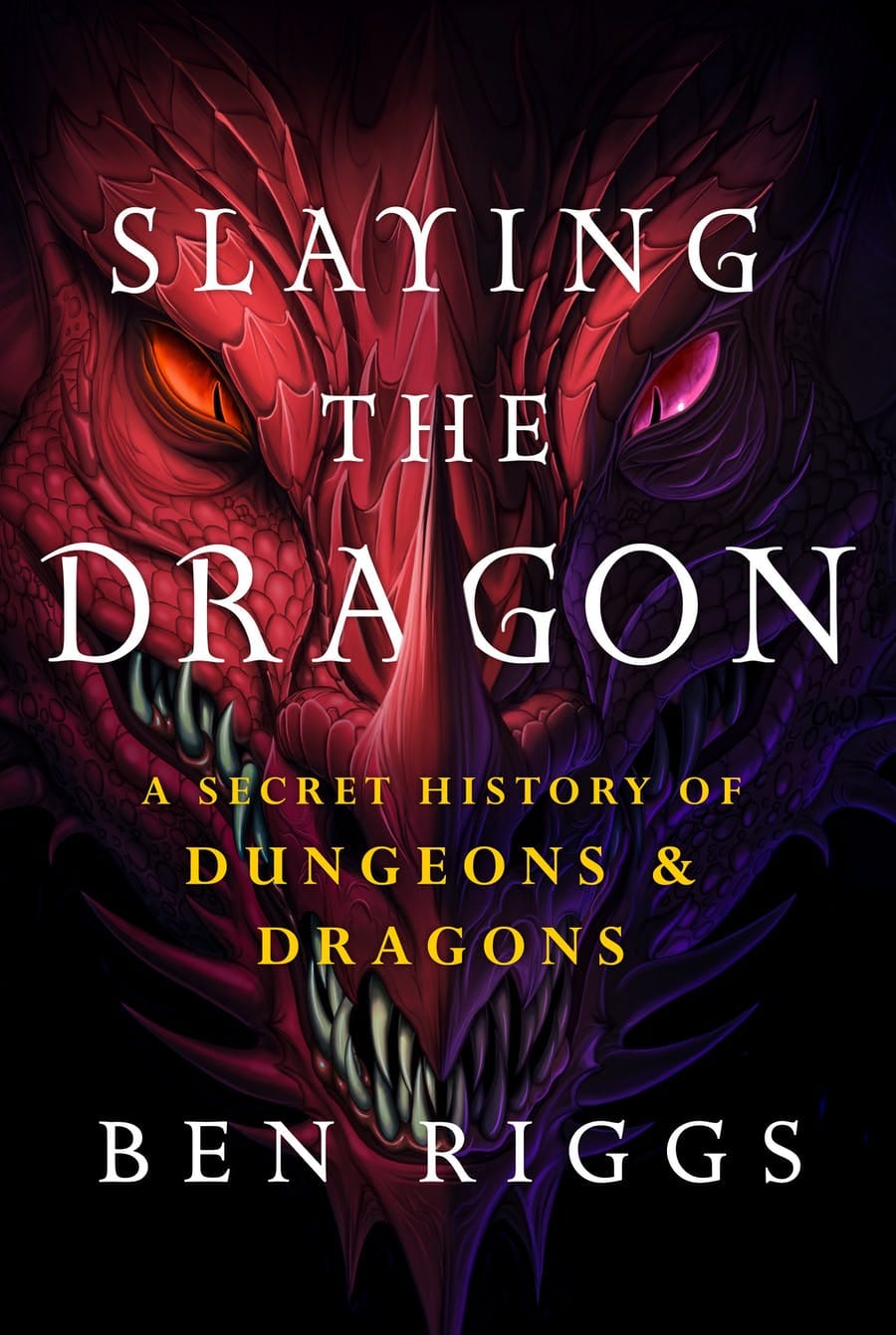
Dungeons & Dragons and TSR, the company that first published it, are inseparably baked into the culture and history of roleplaying games. The minds that worked there built the most famous system and designed some of RPG's most memorable settings, so the question has to be asked, exactly how is it that TSR was able to go bust, not just once but twice?
That’s the question that sits at the heart of Ben Riggs new book Slaying the Dragon. As it happens Riggs is extremely well placed to tell the story. He is a geek native and also a Wisconsinite with a long history in games journalism. Indeed, the genesis of this book was that whilst researching a series of articles on the history of the game, he came to understand that the story he had been told, and had always believed, about the fall of TSR was not even close to the full picture.
The classic, well repeated, version of TSR's collapse is that it was “death in single combat” with their upstart rivals, and creators of Magic: The Gathering, Wizards of the Coast who would then go on to buy TSR after it went bust. Slaying the Dragon tells a far more complex story though, one of repeated heroically poor business choices that finally collided with a dramatic crash in the market.
The basis of the book is an extensive series of interviews Riggs conducted with former TSR staff. Crucially though Riggs speaks to many of those on the business side of TSR, those whose stories had, to date, been ignored.
The book rattles through the early days of both the company and D&D, the golden age of TSR, the management of TSR by the Blume twins, and the trials of the satanic panic. It’s clear, even throughout this period, that whilst the game itself was well received and selling well, the company itself was being fundamentally mismanaged by both Gygax and the Blumes. This mismanagement eventually led to the company's first crash and it being acquired by Lorraine Williams.
It is this, less commonly studied, ‘Williams era’ at TSR that the majority of the book is focused on, but beyond completeness, the inclusion of the Gygax era in the book serves to counter the widespread perception in the collective geek consciousness that Gygax was a saint and Williams an outright villain. Both characterisations are false according to Riggs.
While Riggs hedges by referring to Gygax as an ‘unreliable narrator,’ he lays out the many inconsistencies between the facts behind TSR’s initial decline and Gygax’s ousting and the way that he would tell the story later in life. Riggs makes the case that contrary to Gygax’s later claim that he was not responsible for TSR’s first collapse, he was both aware of and party to some of the poor business practices under the Blumes’ management. Moreover, he had the chance to prevent Williams’ takeover of TSR before he was forced out but passed it by. Riggs laments that Williams and Gygax were unable to develop a working relationship.
Williams is, correctly, blamed for the ultimate demise of TSR, but it is also true that she had saved it, kept it going for some twelve years and was, in many ways, the better boss. As editor John Ratlif, quoted in the book, says “I never met a single person who was under both [administrations] who didn’t prefer being under her.”
One of the major charges made against Williams -especially by Gygax- was that she “held gamers in contempt.” And while the book shows that she didn’t understand D&D, Riggs argues that the products published under her were, “undeniably awesome in berth, depth and production value.”
Unfortunately, while TSR may have been making good games, the business was still in trouble. Though the company didn’t indulge in some of the more ridiculous mistakes of the previous era, (buying out a relative’s embroidery company and raising a sunken ship spring immediately to mind) many of the errors documented in the book are infuriating: losing key novelists over contract disputes, falling out with comic publisher DC, and insisting on pushing Buck Roger’s products to name a few.
The biggest issue was the loan system that TSR had with Random House. It allowed large sums of debt to build up within the company that meant when a decline in the TTRPG publishing market began they quickly ran out of cash. Indeed things got so bad that they ended up having to sell their office to their printers to cover their debt.
Ultimately the book shows that there was no single cause of TSR’s failure, but a catalogue of mistakes and short-term thinking that when combined would sink the company.
Slaying the Dragon is a needed retrospective on the second era of TSR and a balanced reevaluation of Williams tenure there. It is unfortunate that Riggs was unable to get an interview with her and acknowledges that without her first hand perspective the whole story will never be fully told. That limitation aside, Riggs has writeen a fascinating story of a game, a troubled business and the people behind both.
Author: Ben Riggs
Published by St. Martin’s Press
This feature originally appeared in Wyrd Science Vol.1, Issue 3 (Oct '22)

